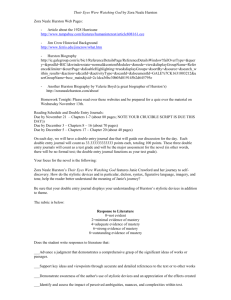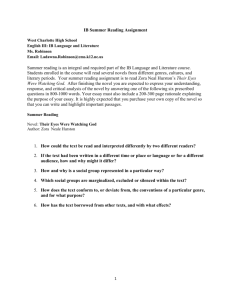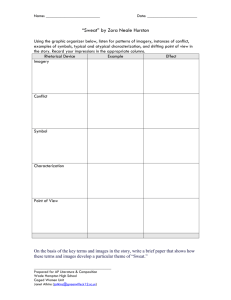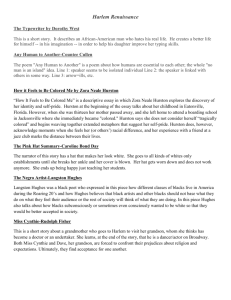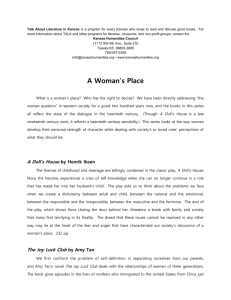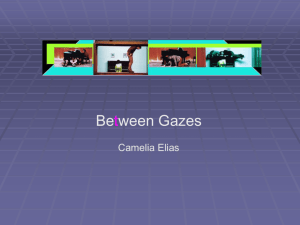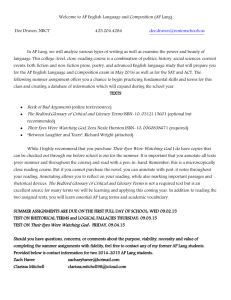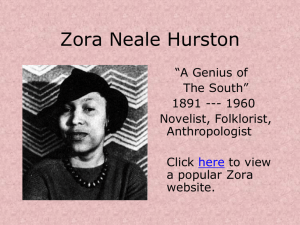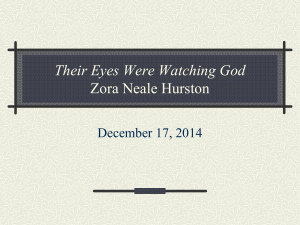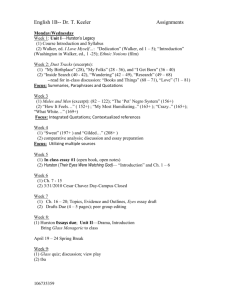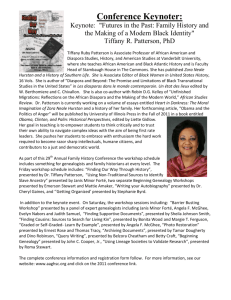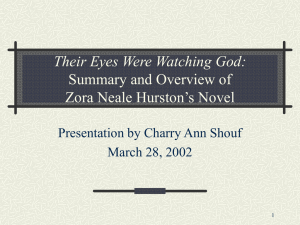Writing in Black and White
advertisement
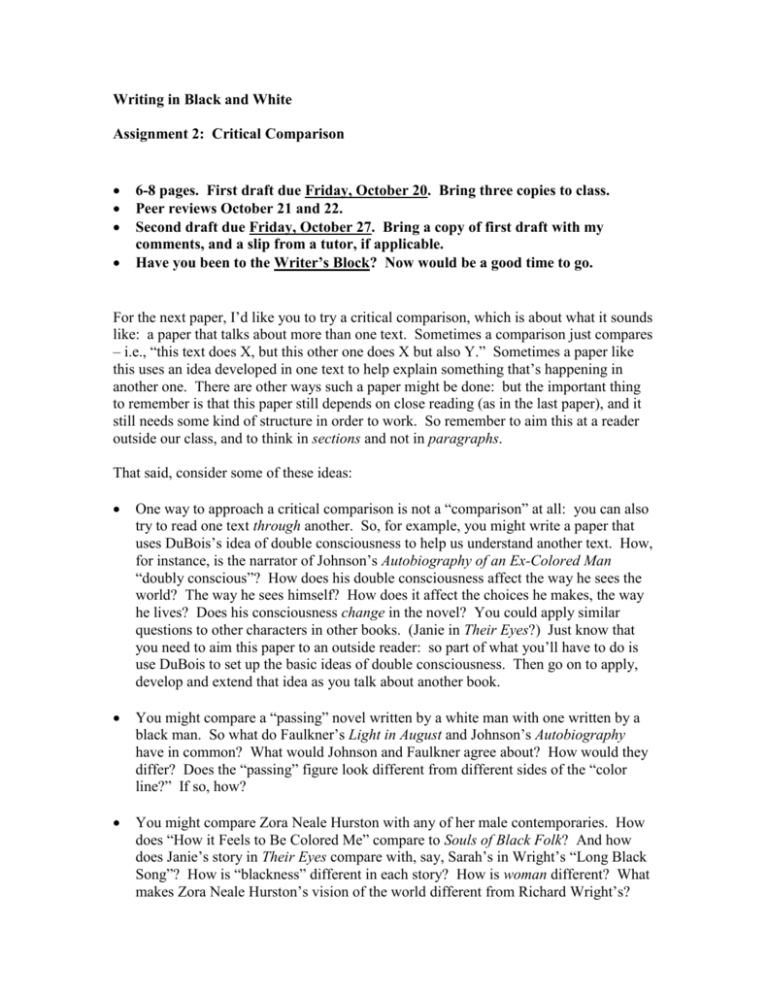
Writing in Black and White Assignment 2: Critical Comparison 6-8 pages. First draft due Friday, October 20. Bring three copies to class. Peer reviews October 21 and 22. Second draft due Friday, October 27. Bring a copy of first draft with my comments, and a slip from a tutor, if applicable. Have you been to the Writer’s Block? Now would be a good time to go. For the next paper, I’d like you to try a critical comparison, which is about what it sounds like: a paper that talks about more than one text. Sometimes a comparison just compares – i.e., “this text does X, but this other one does X but also Y.” Sometimes a paper like this uses an idea developed in one text to help explain something that’s happening in another one. There are other ways such a paper might be done: but the important thing to remember is that this paper still depends on close reading (as in the last paper), and it still needs some kind of structure in order to work. So remember to aim this at a reader outside our class, and to think in sections and not in paragraphs. That said, consider some of these ideas: One way to approach a critical comparison is not a “comparison” at all: you can also try to read one text through another. So, for example, you might write a paper that uses DuBois’s idea of double consciousness to help us understand another text. How, for instance, is the narrator of Johnson’s Autobiography of an Ex-Colored Man “doubly conscious”? How does his double consciousness affect the way he sees the world? The way he sees himself? How does it affect the choices he makes, the way he lives? Does his consciousness change in the novel? You could apply similar questions to other characters in other books. (Janie in Their Eyes?) Just know that you need to aim this paper to an outside reader: so part of what you’ll have to do is use DuBois to set up the basic ideas of double consciousness. Then go on to apply, develop and extend that idea as you talk about another book. You might compare a “passing” novel written by a white man with one written by a black man. So what do Faulkner’s Light in August and Johnson’s Autobiography have in common? What would Johnson and Faulkner agree about? How would they differ? Does the “passing” figure look different from different sides of the “color line?” If so, how? You might compare Zora Neale Hurston with any of her male contemporaries. How does “How it Feels to Be Colored Me” compare to Souls of Black Folk? And how does Janie’s story in Their Eyes compare with, say, Sarah’s in Wright’s “Long Black Song”? How is “blackness” different in each story? How is woman different? What makes Zora Neale Hurston’s vision of the world different from Richard Wright’s? What do they have in common? You might write a paper about beauty – if so, consider comparing Their Eyes Were Watching God with The Bluest Eye. How is “beauty” connected with race in each of those novels? How does each novel deal with that connection? Would Zora Neale Hurston and Toni Morrison disagree about beauty? Would they agree? Say how. You might try another tack, if you’re adventurous. Try writing a letter from James Weldon Johnson to William Faulkner. You (Johnson) have just finished Light in August, and you’d like to respond to its author. Then write Faulkner’s letter back to Johnson. (You could also try a different pairing here – say Hurston and Wright, or Morrison and Hurston.) The key here is to try to get the voice right, and to center the letters on a point you can support. That’s enough for now. As always, you can try any of these, or you can try something else. Let me know, though, if you decide to go really far afield. But above all, have fun, and let yourself speak.
